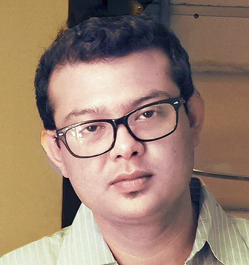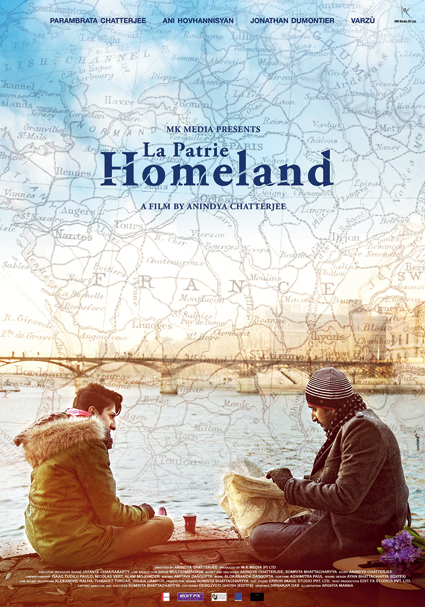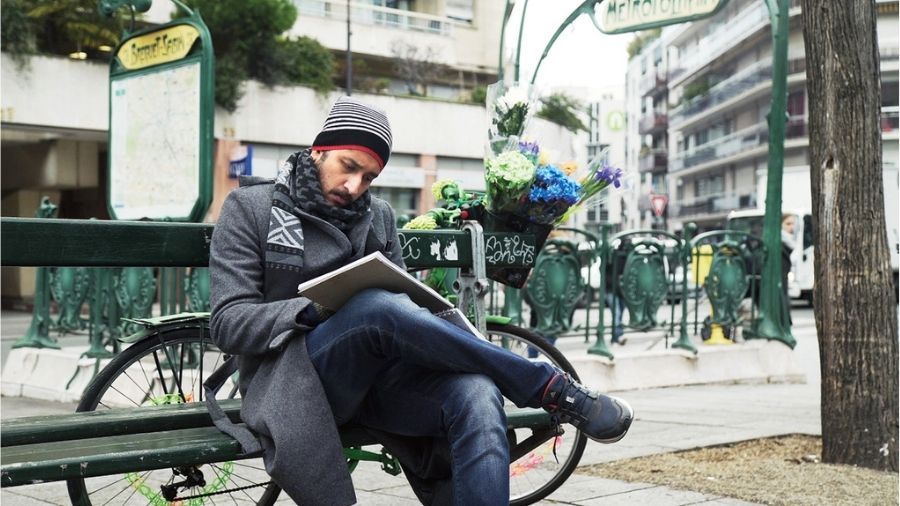In 2011, film-maker Anindya Chatterjee was in Africa for a documentary shoot. “When I was at the airport there, waiting for immigration, I just noticed a fly, going in and out of the sliding door. It didn’t require any immigration formalities, visa or passport. Strangely, since that time, this concept of one universe started bugging me. I knew I had to turn this thought of mine into a film. So that was the origin,” says Anindya, whose film Homeland — La Patrie, which was on Netflix last year, is now streaming on Cinemapreneur.com. A chat with Anindya...

Anindya Chatterjee. Telegraph Picture
Why decide to make a film on this theme of searching for roots?
Why not? This is such a contemporary yet classical concept. At different ages, different people, poets, creative minds have talked about the same theme in different ways. The question is so common. What is our homeland? Why we have frontiers around us? But the answer is not known. Everyone must have their own interpretations. So, I wanted to add mine.
Have you embarked on a search like this?
My parents had their roots in Bangladesh, like many others. Since childhood, we always kept on listening to different stories of roots and tried to understand the pain of being uprooted. Then in this age of globalisation, we travel, we go to different countries, sometimes we stay there. We are surrounded by people like that. When I travel abroad for various projects, I meet different people of different nationalities. Many of them have similar stories. So, yes, this concept of searching for roots is a life-long journey for me. I have shot this film in France, but this can be based in any country.
What is homeland for you?
I live in moments. So, my homeland is where I stay for that particular moment. Wherever I go and stay, a sense of belonging grows, and it leaves an essence of nostalgia. Sometimes it’s my motherland, sometimes it’s where I work, or my friends live.

A poster of the film.
How did you design the film and the form?
The form of docu-fiction moves me a lot. Many people might find this style a bit like documentary film-making, as I have used both actors and non-actors, and some of them played their real-life characters. But I like to tell the story that way, where there will be some research on the history and geography of the place, the fiction would get blended with reality. I made Homeland — La Patrie in that way.
How did you go about the process of casting?
The cast in this film is a mix of actors and non-actors. Many of the characters are playing their real-life characters. Paris is a very cosmopolitan place. So different nationalities live there. When I first decided to film this, I met different technicians and people there and the journey started in December 2014. I met this Armenian girl Ani, through my common friends and my co-writer. It started like that. Then I was looking for a joiner, a conscience that would hold the film together. I was looking for a common Indian face that can be believable globally. And Parambrata (Chattopadhyay) was one such person. His presence in the film is so global, yet so Indian, it’s unbelievable! He did a terrific job. My leading lady Ani also grew a lot through the entire making of the film.
Tell us about Param’s character?
Param is the ‘conscience’ of the film. His character’s name is ‘Ganga’. Like the Ganges, he never remains still, he never lies, he always flows, just flows. He is an Indian guy who has travelled a lot, now living in Paris, that too when his visa has expired. He gives a fresh perspective to the word ‘homeland’ to Ani.
How was your shooting experience in Paris?
It was wonderful and crazy. I had a super fun and crazy team, a very small one though. My co-writer Somrita, my main actor Parambrata, costumer designer Agnimitradi and I were from Calcutta. The rest were from France, so my team was multinational and multilingual in the true sense. There were Armenian (the leading lady), French, Portuguese, African, Arab, Bangladeshi and expatriate Indian people in the cast and crew. We had to shoot in minus 10 degrees temperature. It was freezing cold and we were shooting by the Seine river. We were not being able to sense our fingers and nose. It was an out-and-out indie film, so we were shooting in a guerrilla film-making method you can say. It was hard and challenging, but everyone was patient and supportive, so we could make it.

Varzù and Ani from the film.
Lennon’s Imagine inspired you to make Homeland...
My film starts with those two lines — “You may say I’m a dreamer, But I’m not the only one”. And it ends with the song in Parambrata’s voice. Especially in this strange time, we can sense the philosophy even better, what if the universe was one country, there were no frontiers? Lennon thought that way and said he was not the only one who had dreamt of that. Indeed, I dream that too, and many others are there with me. Imagine was and is a huge inspiration.
What’s your next project?
I am currently handling two projects. I am in the pre-production stage of a short film, and in the writing stage of my third feature film. There is a common thread between these two projects. I am planning to make both in 16mm celluloid. The experimental short film will revolve around the concept of ‘deja vu’, and the fiction feature will be about ‘deaths’. I’ll not go deeper. But would like to mention that this feature story is my dream project, I have been culminating this concept (based on a true story) since 2012, even before I started writing my first film Jhumura. This one would also be an Indo-European collaborative production like Homeland — La Patrie, but the shooting will be done in Bengal suburbs and border areas. And this one will also be a multilingual one, as we live in a multilingual universe, wherever we go.
Why make the films on celluloid now?
Celluloid gives an illusion of 24 frames. It creates a graphical perception when it runs and gets scanned after processing. I really want to experience that magic. Such a fine medium can’t get obsolete. I want to try the affordability of it, I believe my next feature film would give the best kind of image if I shoot and expose it in 16mm, because the story is of the ’90s. So, a sense of nostalgia will be there in the visuals. You can say, the short film would be a trial in the same medium before I jump into the production of the feature, as the use of celluloid is less frequent nowadays.










